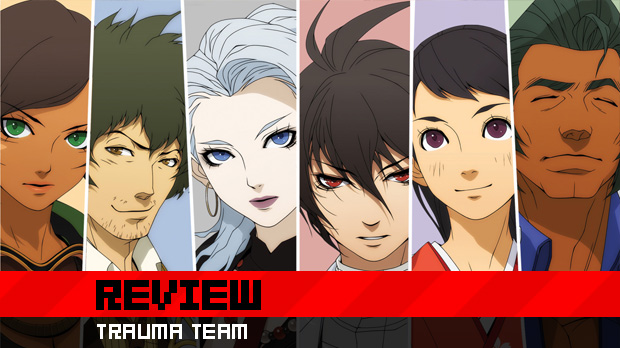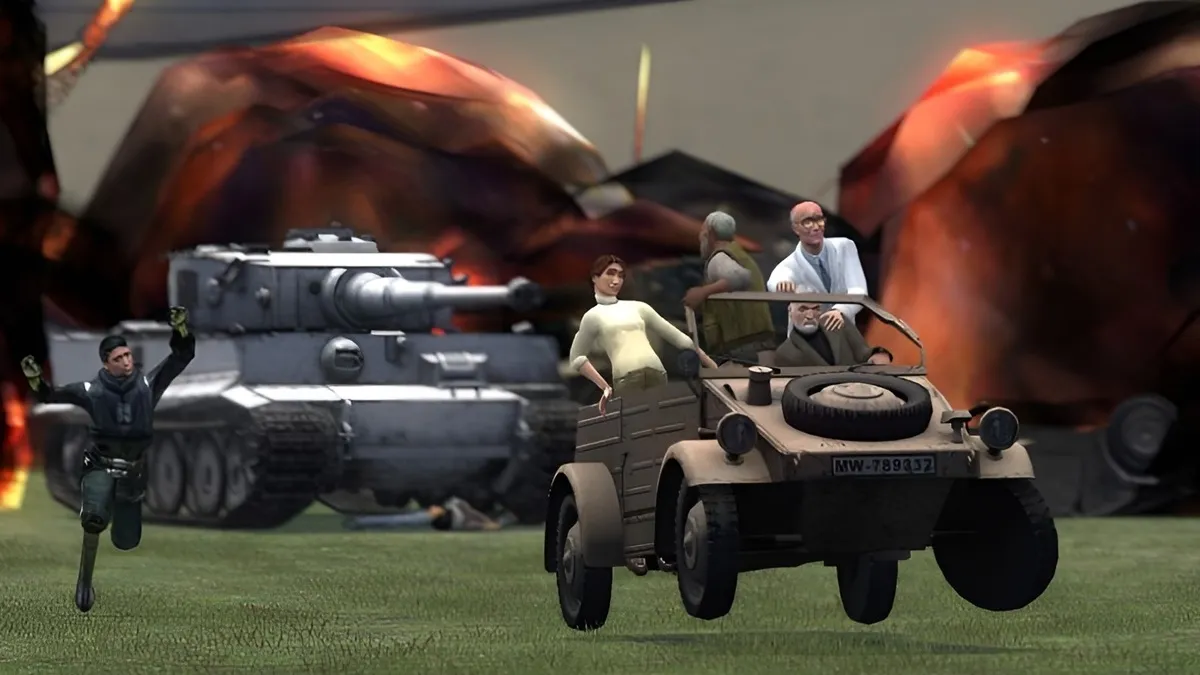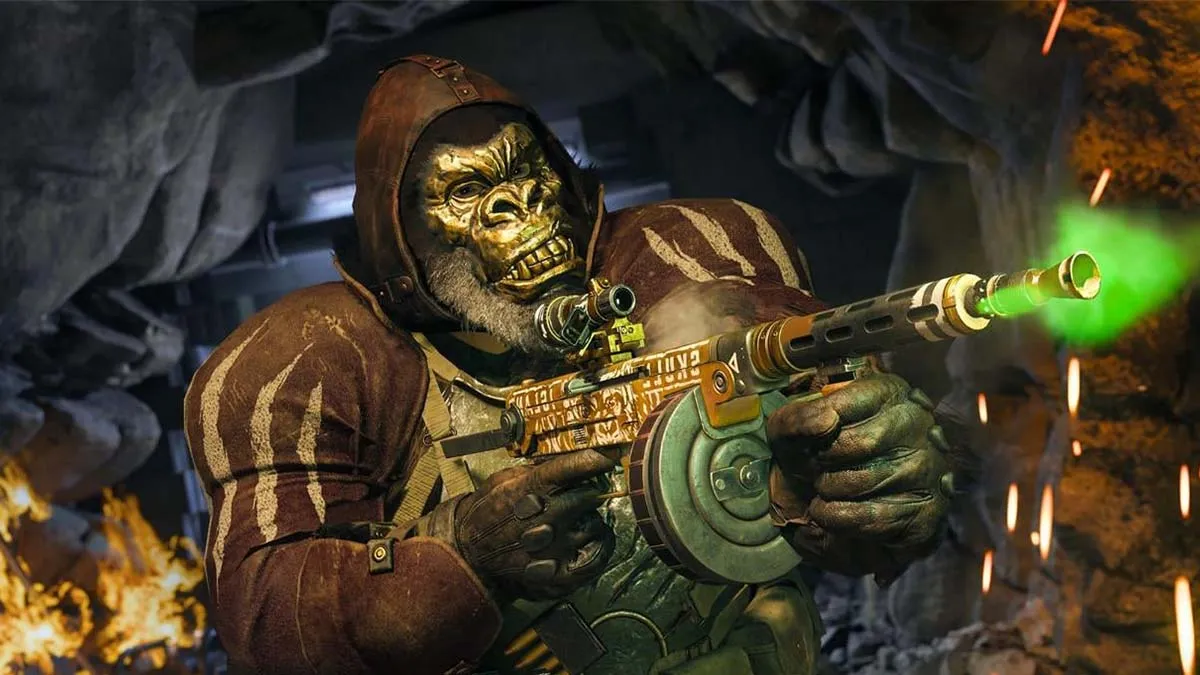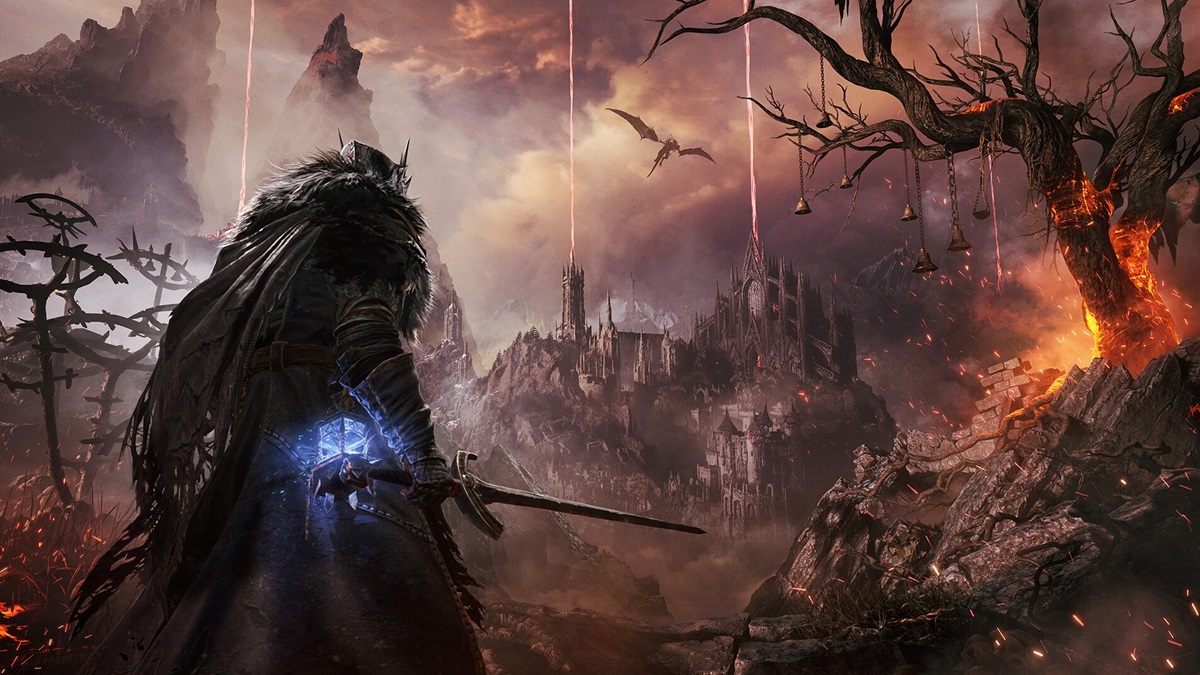Ah, the world of Trauma Team. It’s a pretty unique place with pretty unique people. Everyone seems to have either huge boobs or huge noses. Everyone’s relatively attractive, yet strangely familiar looking at the same time. Everyone lives their lives set to a porno-ish soundtrack and everyone yells “dammit” whenever possible.
I kid. This game’s world is a strange world, but it’s a fun world to get lost in, too. Trauma Team is like an over-the-top television drama where both blood and exclamation points fly with reckless abandon. Yes, you’re still slicing organs, excising polyps and drilling bones, but all of this is nowhere near as dramatic as the lives of the Trauma Team‘s doctors.
You may have picked up a virtual scalpel in the past in a Trauma Center game, and you may think you know what to expect in this sequel. You should know that there’s so much more going on in Trauma Team. The cutting of lovely patterned organs and jewel-shiny tumors is sometimes just a backdrop to the lives of Trauma Team‘s six main characters. Aside from the varied modes of medical game play, the variety of characters is what makes Trauma Team great.
Scrub in for our review of Trauma Team.
Trauma Team (Wii)
Developer/Publisher: Atlus
To Be Released: May 18, 2010
MSRP: $39.99
In the Trauma Center games, all of the time spent in the operation room was on surgery. The surgery game play was fun, but it always left me wondering about the other fields of medicine and how they would work into the game’s formula. Atlus has answered that fully with Trauma Team‘s six playable fields of medicine: endoscopy, orthopedics, forensics, diagnostics, emergency response, and surgery. What’s great is that you’ll often see interplay between these fields. For example, you’ll see patients that you originally treated on-site as the emergency response character, Maria Torres, back at the hospital getting his broken bones fixed by orthopedic surgeon Hank Freebird. While each character and medical field represents its own standalone game path, you’ll see that both the stories and medicine overlap, making for a game experience that is far more engaging than past Trauma series games.
Each of the six characters can be selected and played in any order, letting you mix and match medical disciplines to your liking. You’ll progress through several day-in-the-life style episodes for each character, all presented in a sort of graphic novel or comic book style, complete with cells and speech bubbles. This style is perfect for telling the stories of these six dramatic characters, as any other format probably wouldn’t do any justice to these doctors’ crazy lives.
Seeing as how the game play for each of the medical fields is so different, we’ve separated the six disciplines/ characters in this review:

CR-S01 – Surgery: The game opens with the young and mysterious surgeon that is called only by his inmate name, CR-S01. He’s in jail for life for a crime he’s not sure he committed, as he lost his memory some time back. The only thing he does remember is how to be a fantastic surgeon. For this reason, he is pulled out of jail to save people with his skills. You’ll pull off amazing medical feats as CR-S01 in game play that is closest to the old Trauma Center games. While his segment of the game has the least new to offer in game play, it probably has one of the most interesting stories of the six. You’ll gradually uncover why CR-S01 was thrown in jail while also slowly earning the trust of the Trauma Team.

Tomoe Tachibana – Endoscopy: Tomoe is a beautiful Japanese princess. Seriously — she even has her own butler. She’s less interested in being Japanese royalty and more interested in saving lives through endoscopy, which uses a small scope that is inserted into the body. In one of the more engaging types of game play in Trauma Team, you’ll use the Wii Remote to actually push a scope forward with a realistic, forward pushing gesture. Easy does it, though, as you don’t want to hit organ walls and injure the patient! The nunchuck serves as both a way to steer and a control device for all the different types of tools an endoscopic surgeon needs. You’ll drain blood, cut tumors, and cauterize spots of hemorrhaging while making your way through the tunnels of the human body. You’ll start of easy in organs like the intestines, but later you’ll have to move through moving membranes, navigate in-body currents and even snake through the branching airways of the lungs. If you’re anything like me, you’ll feel so tense that you’ll break a sweat!

Maria Torres – Emergency Response: Maria is pissed off at the world. In fact, she’s so mad that it’ll likely get to you as you uncover her story. No one this busty should be this mad, but you’ll eventually see why she became this way through her episodes. She puts that rage into her work, pushing herself to become the best emergency response doctor there is. Trauma Team‘s most frantic game play is here, where you’ll show up at the scene of over-the-top accidents, working to patch up as many victims as you can as fast as you can. The game play is quite different from the rest as you’ll only have access to the most basic tools, like antibiotic, bandages, scissors, and the like. Sometimes you’ll have to improvise and use whatever you can find to save a patient. The other aspect that stands out in this mode is that you’ll often have to juggle multiple patients at once. They keep coming, too. No wonder she’s so angry!

Hank Freebird – Orthopedics: This is both my favorite character and my favorite discipline. Hank is a huge man. A huge man with an awesome name. He’s so huge that he causes the ground to shake when he walks in the room. He’s not a big, dumb oaf, though. By day, he’s a brilliant orthopedic surgeon that can fix the most broken bones with ease. By night? Well, he’s a crappy superhero with a complex. You’ll see what I mean. There’s nothing crappy about how he works in the OR, though. Looking at all the in-OR fields, I found that I was having the most fun with orthopedics. Sawing bones with lasers is fun and rewarding, but takes a steady hand. You can feel the hammer vibrate in your hand when you hammer pins into bones. You feel the drill vibrate as you screw in braces to bone mends. Later, Hank even gets into prosthetic limbs, which increases the challenge considerably.

Gabe Cunningham – Diagnostics: When you need a break from the OR, patient diagnostics is perfect. You’ll never need to get your hands dirty as you’ll spend time questioning and examining patients, and then looking over charts and scans to determine what’s wrong with them. Your reflexes can take a break, but your wit will have to take over, as Gabe’s cases are real brain busters. You’ll pour over even the most minute details, like white blood cell counts, to figure out what’s wrong with your patients. Most data is represented in number that get down do decimals Needle in a haystack? Worse! Worse, but not tedious. Even though you’ll have the assistance of a supercomputer available to analyze our diagnostics, you’ll still have to manually analyze CT scans and MRI results to find the true diagnosis. Atlus doesn’t go easy on you here, and that’s what makes diagnostics so fun. My advice? Take your time and look over everything. I was stumped so many times.

Naomi Kimishima – Forensics: You know those silly television dramas where a forensic doctor (or team) spends an a day or two trying to unravel the mystery of a mysterious death? Trauma Team‘s forensics segment is just like that, though none of your television doctors are as shapely and sexy as Ms. Kimishima. She’s also a bit creepy, with some kind of mysterious connection with the dead. She’s rather close to death herself, as you’ll see. That’s okay, as it makes her an excellent forensic doctor. Much like with diagnostics, you’ll find a marked change of pace here. You’ll look at evidence, crime scenes, and even the deceased to determine how they died. While a surgery could finish in 5 minutes, you’ll find that it could take upwards of two hours to uncover who dunnit. You’ll have a life bar with five segments, which provides you with limited opportunities for mistakes in your findings. No worries, though, as you’ll have the help of police investigator named Little Guy, seen above in his non-Mii form. LG can analyze blood and fingerprints, and is more than happy to talk through the evidence with you. As the evidence pieces show up, you’ll process the pieces on your office computer, using clue cards that can be matched and compared. You’ll do this until you’ve found solid evidence. From here, you’ll be asked multiple choice questions to further explore what happened at the time of death. If you’ve ever enjoyed a Phoenix Wright game, you’ll find a lot to like in Trauma Team‘s diagnostics and forensics segments.
The few drawbacks to Trauma Team are common to most disciplines. Perhaps the biggest one is some heavy instances of repetition. While it’s fun to put the pressure on with multiple wounds to tend to under a time limit in surgery, ones that continue to arise in places you’ve already operated stops being fun quickly. Having to dress the same wound over and over for fifteen minutes kind of goes against the nice variety of game play that Trauma Team presents. There were several times I found myself yelling “really?!” at the television when wounds continued to open up.
Likewise, in the non-surgery fields, like in diagnostics or forensics, the repetitive actions also sometimes wear at you. In both of these fields, you’ll begin to feel like you’re constantly moving back and forth between locations/offices/labs. There were many times I felt like the slow reveal in these cases was a bit too slow; it felt like they only served to increase the playtime of the episode. Worse, in the forensics section, combining cards in the precise order expected seemed like a chore when you’ve already figured out the overall solution. Despite knowing who did it, you’ll still have to go through the motions in cases that could take over an hour to solve.
And here’s a first: I’ve never before complained about a score from famed game composer Shoji Meguro, who was also responsible for the amazing soundtracks of many other games including the Shin Megami Tensei and Persona series games. Normally he’s fantastic. Unfortunately, in Trauma Team, it’s hit-or-miss. While there are some excellent tracks that keep the blood pumping during the action (Maria’s action theme rocks!), there are several others that are too…sexy for the situation. Or cheesy. People are dead on tables while music that would be at home in a porn film plays in the background. It’s funny at first, but later it gets to you later.

I-beam impalement happens often in Trauma Team.
On the upside, Trauma Team does a lot to be inviting to new players. No previous knowledge is required to enjoy Trauma Team, mind you. The style of storytelling goes a long way towards making this an inviting game, but Atlus has also gone out of their way to lend a helping hand in game play with fully descriptive mini tutorials that show you how to use all of the operating room tools. Even beyond that there’s handy tool icons that gently guide you along. In-episode characters are also happy to point you toward the next step if you’re ever stuck, which I was really grateful for during the forensics and diagnostics segments. Atlus has made it to where just about anyone can pick up Trauma Team and enjoy it.
Even though this picks up where the already established Trauma Center series left off, there’s really nothing else like Trauma Team out there. There’s such a variety of game play that it feels like several different games wrapped up in to one package. Thankfully, the Wii control scheme on all of these fields is fantastic, leaving the only stress to come from operating room pressure. But what really makes this game is the television-style drama that you’ll uncover in the episodes from these six characters. Each of these characters have pasts that are slowly revealed as you play, but their lives will also relate to each other, making their stories even more engaging.
If you liked the Trauma Center games, you have to try Trauma Team, as Atlus has evolved the formula so much that its predecessors look pretty primitive. For those that didn’t dig older Trauma Center games so much, know Trauma Team is a much improved experience, many times over. There’s so much varied game play and story content in Trauma Center that I feel like it’s easy to recommend to just about anyone.
Score: 8.5 — Great (8s are impressive efforts with a few noticeable problems holding them back. Won’t astound everyone, but is worth your time and cash.)





